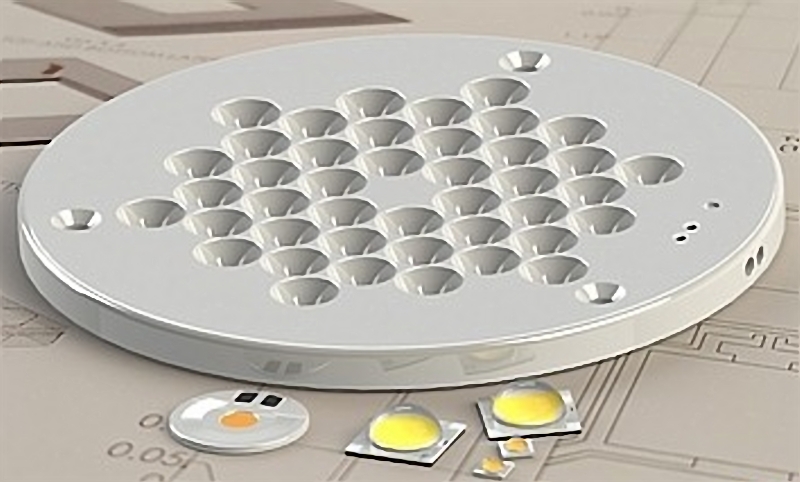LED Technology improvements in 2016
14-01-2017
2016 has said goodbye to us, and we can see at least 12 important LED technology advancements in the following according to some open statistics.
1) USA researchers make droop free LEDs
Researchers from the University of Illinois at Urbana Champaign developed a new method of making brighter and more efficient green LEDs this year. Using an industry-standard semiconductor growth method, the gallium nitride (GaN) cubic crystal was grown on silicon substrate to produce a powerful green light for LED lighting.
2) Ostendo Epilab launches the first RGB GaN-based LED in the world
Based in Carlsbad in Southern California, Ostendo EpiLab launched the first RGB LED around the world. The LED based on GaN technology uses three specific materials to make a quantum structure to shoot different color lights individually or mixedly. Traditional LEDs basically are monochromic, and can only emit a single wavelength. To achieve colorful RGB lighting effects, more than one LED is required to mix the desired color. The Gan-based RGB LEDs will be used in new LED displays to replace LCDs and even surpass OLED technology.
3)Newest developments in UV LED curved lens technology
Integration Optic Technology Institute of Chongqing Institute of Green and Intelligent Technology under China Academy of Sciences announced new developments in UV LED curved lens technology, which can be applied in light sources of UV exposurers, PCB, LCDs, and even in touch panel applications.
4) GaN material provider Saphlux offers a new solution to solve the issue of semi-polar Gan material models
Saphlux has been able to provide standard large sized sapphire substrates that can be directly used to grow semi-polarized GaN, and control the crystal growth direction plus shape.
This improvement means the industry can solve the bottleneck of quantum droop, and green gap of first generation LED materials to make highly efficient LEDs and laser products. High product requirements will benefit from this improvement, such as medical and outdoor lighting.
5)Improving white LEDs lumen efficiency greatly with innovative materials
Researchers from National Tsing Hua University in Taiwan annouced that they successfully made a white LED product made from Alrali earth metal rather than rare earth metals. The LED is basically made from Alrali earth metals, combined with metal organic frames (MOF), graphene and other materials on the top and bottom layer to make a white LED. The LED made from new materials can emit light beams with similar quality to natural lights, and does not emit strong blue light. The lumen efficiency is significantly higher, because it does not have to remove other colors.
6)Japan develops rare element free red LEDs
The researchers from Tokyo Institute of Technology and Kyoto University are turning to earth-abundant elements as an choice, such as using nitrogen and zinc components as criteria for their screening methods. The low cost materials can reduce the production costs of red LEDs and solar cells.
7) Chinese researcher finds hybrid nanocrystal LED designs can effectively reduce efficiency droop
Chinese Nanjing University researchers found a new application for hybrid nanocrystals, where it can be used to fill holes in InGaN or GaN LED structures to significantly boost white LED lumen efficiency.
8)Chinese Nanjing University of Technology develops most efficient perovskite LED
A research team headed by Wei Huang of Jiangsu Flexible Electronic Laboratory, and Professor Jiangpu Wang significant breakthroughs in perovskite LED research. They introduced a perovskite with multiple quantum well structure for LEDs, and the component’s efficiency and reliability far exceeded other perovskite LEDs.
9) Wacker Chemie launches new adhesives for LED packages
Germany Munich-based Wacker Chemie successfully achieved two types of silicon LED encapsulation compounds, respectively LUMISIL740 and LUMISIL770. The LED package material can be cured to form highly transparent silicone elastomers, flexible silicon form. Both silicones can work at extremely high working temperatures and strong light radiation without yellowing or embrittlement.
The two products belong to the group of normal refractive index (NRI) encapsulants. They effectively protect the sensitive LED semiconductor chip against environmental influences. They can additionally serve as carriers for luminescent dyes, which can selectively influence the color of the light emitted by the LED and under normal room temperature.
10) Taiwanese researchers develop new material to extend lifetime of LED lights
Recently Taiwanese researchers developed a latest thermal cooling material to replace hard and thick aluminum thermal heat sinks. The research team says it used polyamide and reduced graphene oxide (rGO) for the heat sink. The LEDs can more effectively cooled odwn internally from the LED light.
Also, the research team developed a plastic material that has thermal properties similar to expensive graphene. The material can reduce equipment costs, weight, while producing flexible LED thermal dissipation material that significantly boosted LED lifetime.
11) New improvements in LED thermal dissipation devices
Recently, China Light Industry senior engineer Kuanan Li developed an innovative LED thermal dissipation technology, which can successfully remove all obstacles and use a linear designed fan to forcefully achieve good thermal dissipation effects.
12)Chinese Wenzhou University College of Chemistry and Materials Engineering invents new material to extend white LED lifetime
LED lights lifetime have been extended by nearly 10 years through innovative materials developed by Weidong Xiang, Assistant Professor at Oujiang College.
Xiang spent many years developing a yellow light on a single LED die chip that can be synthesized under high temperatures of 2,000℃. Due to the chips thermal resistance, high conductivity, LED lights will become more resilient, and have longer working life. The LED lights are not easily damaged by high temperatures after long hours of operation, so it is much suitable for lighting applications in luxury cars, automotive LED lights, high speed rail, airplanes and submarines.


